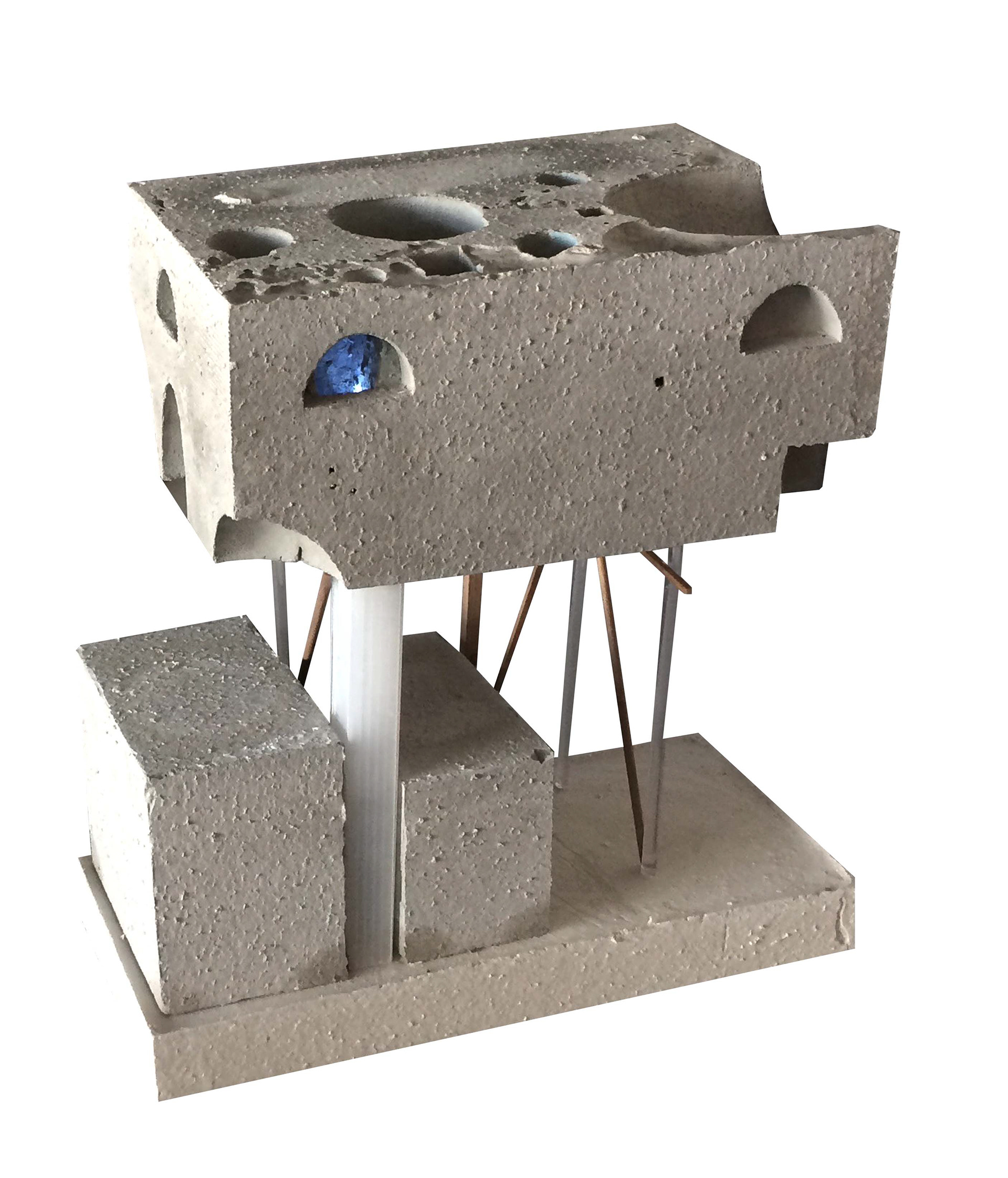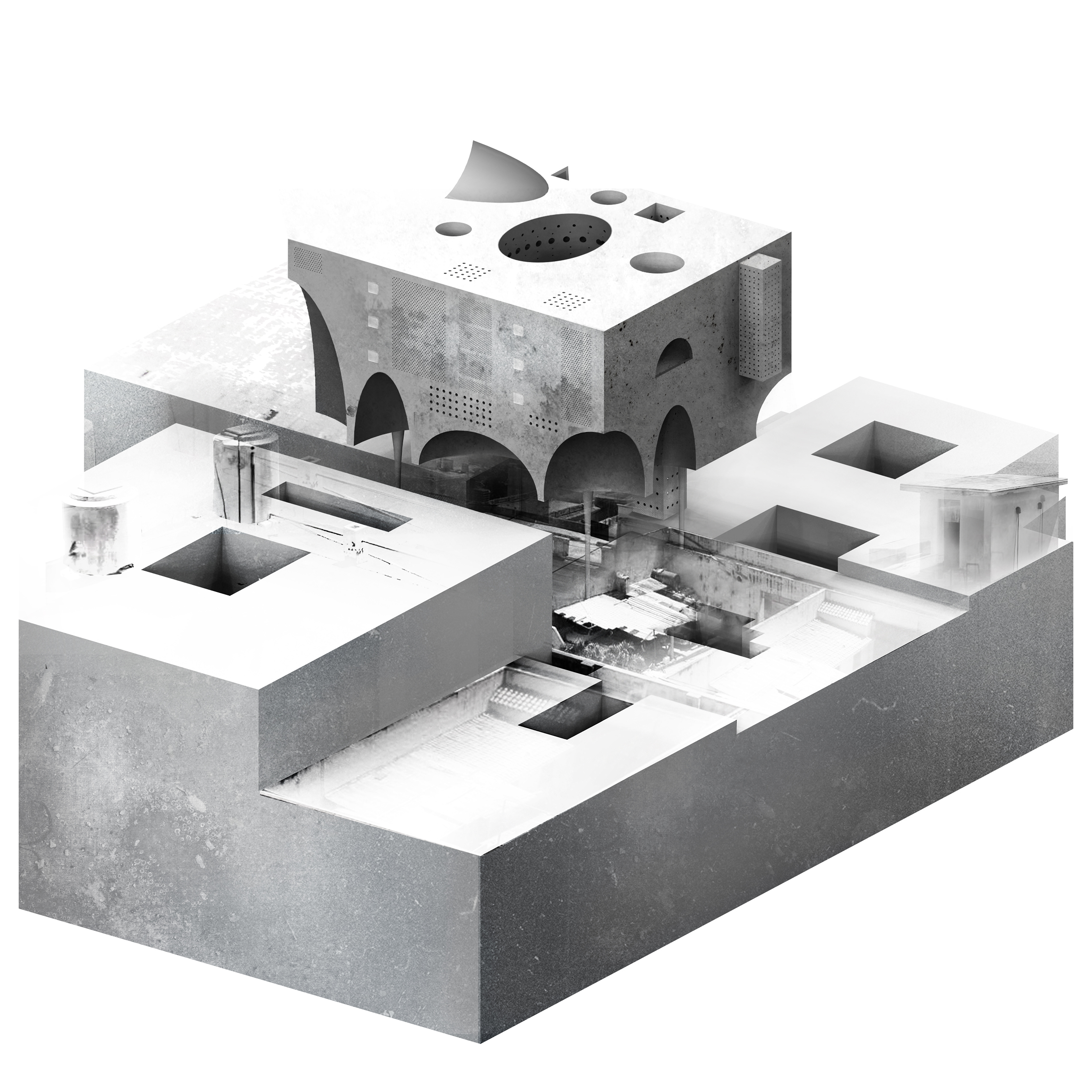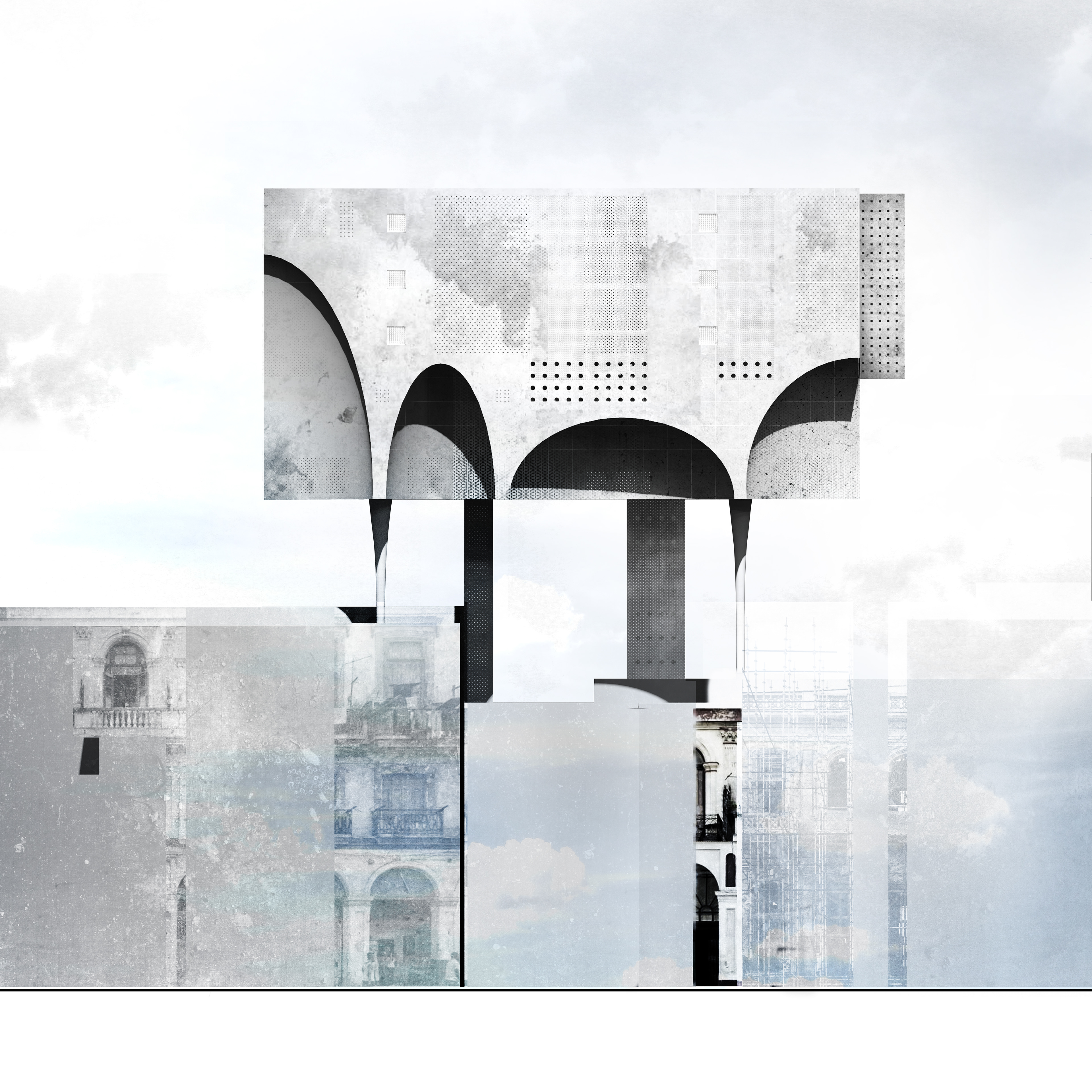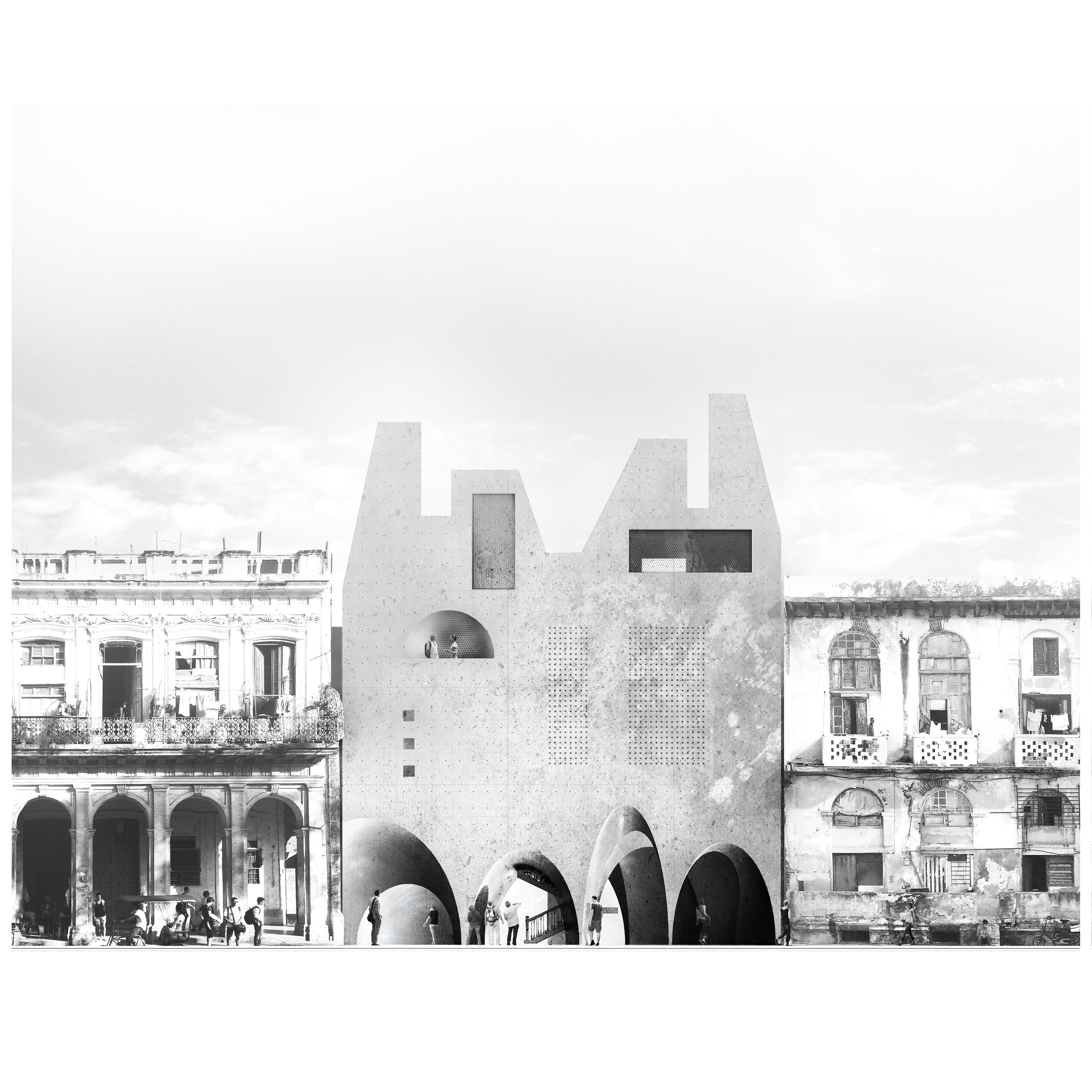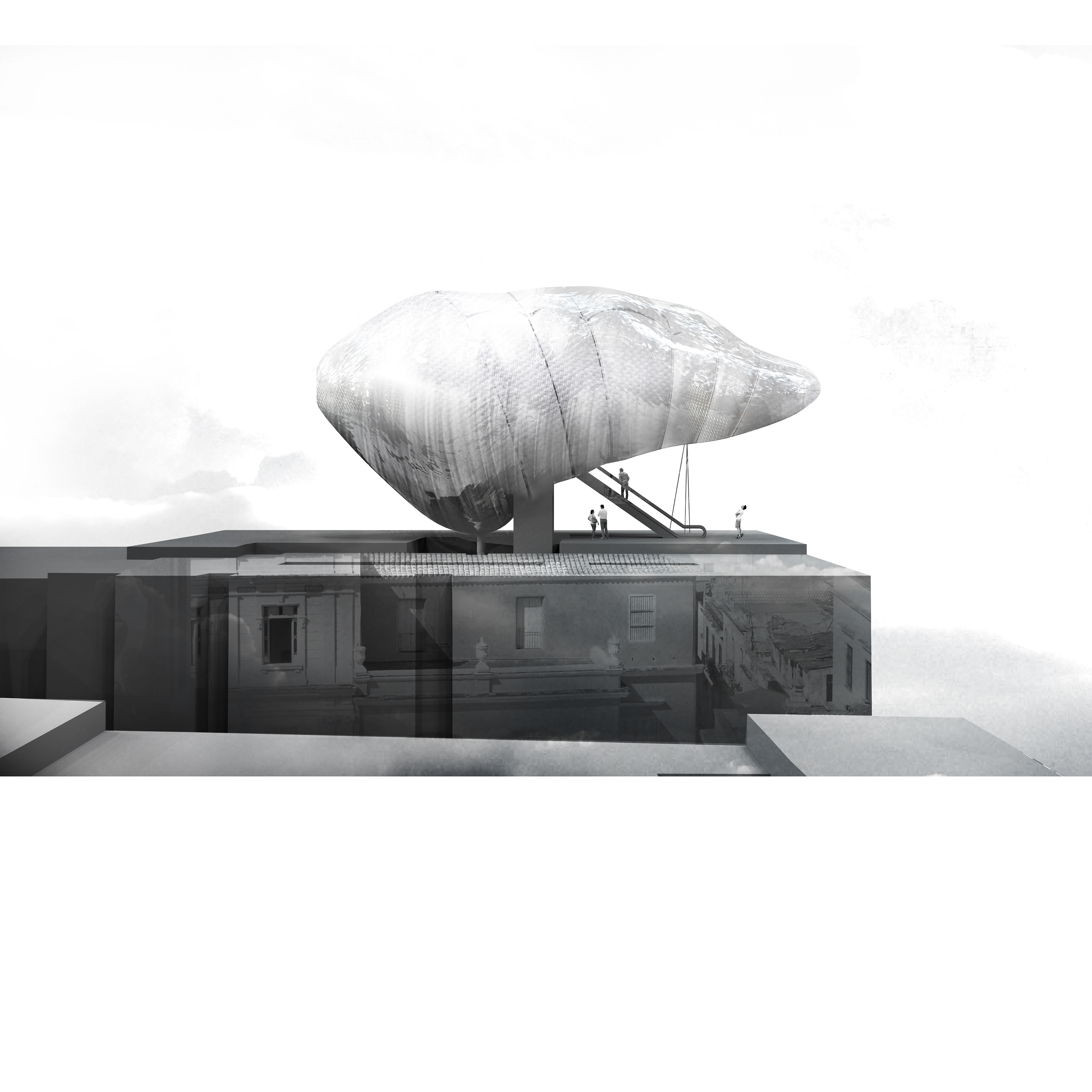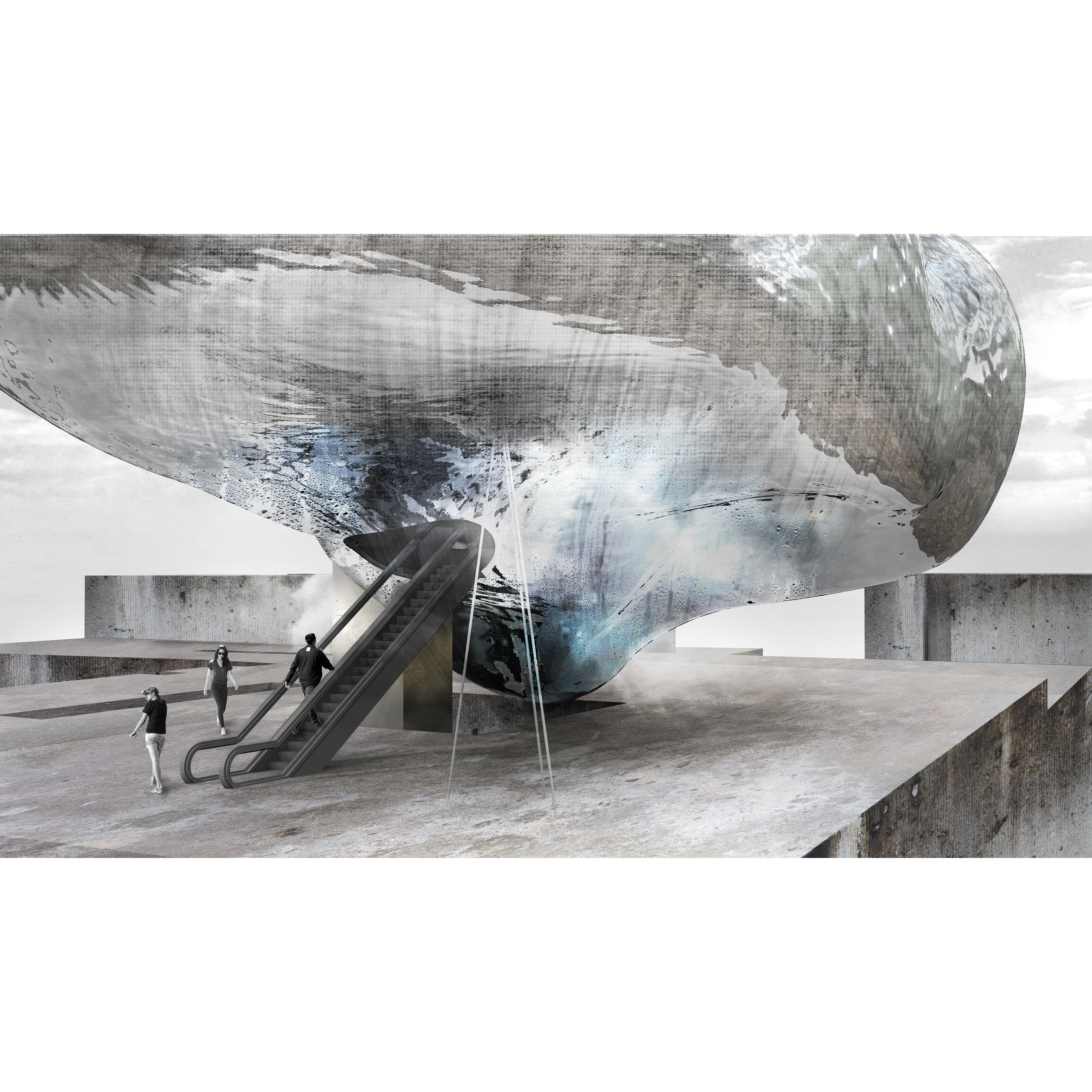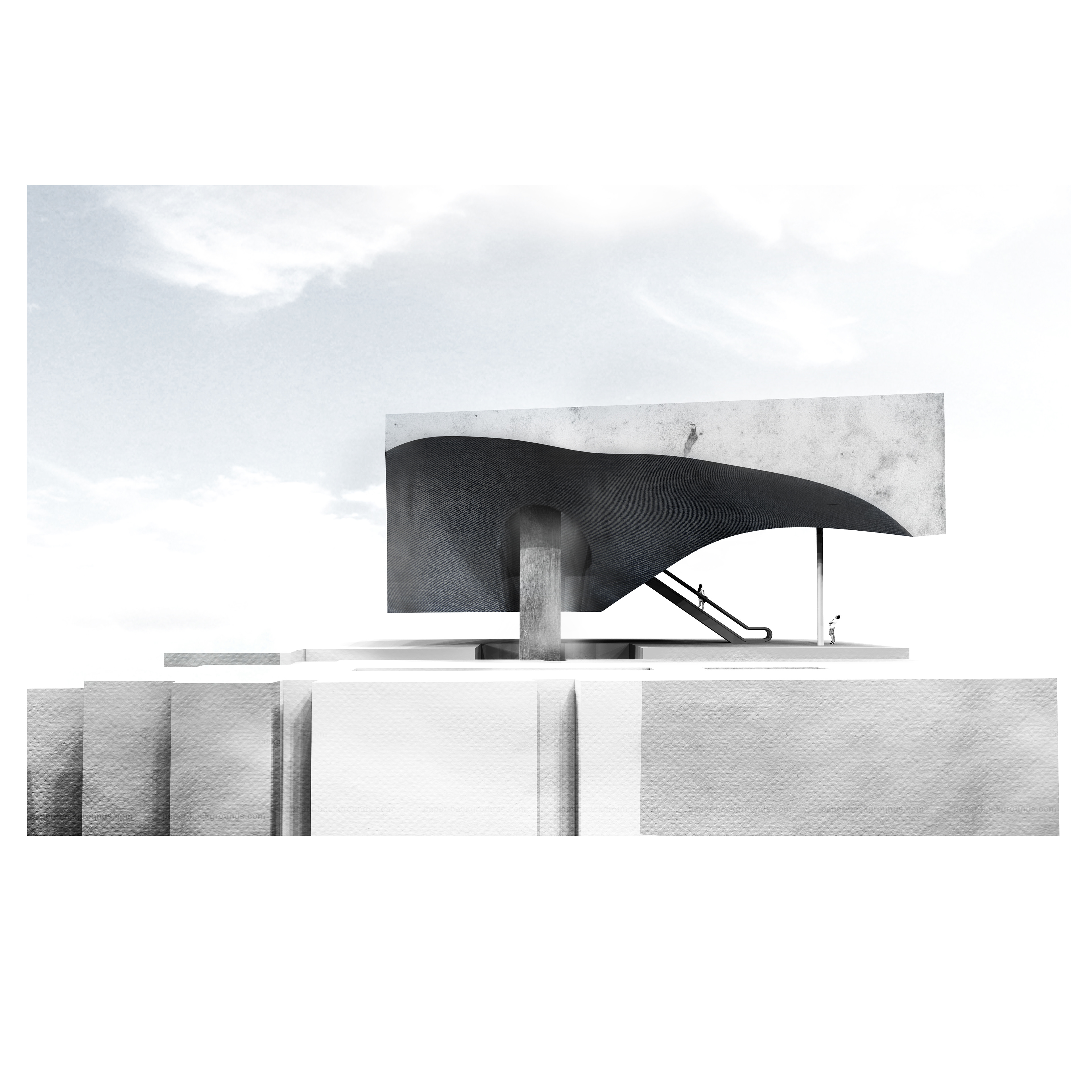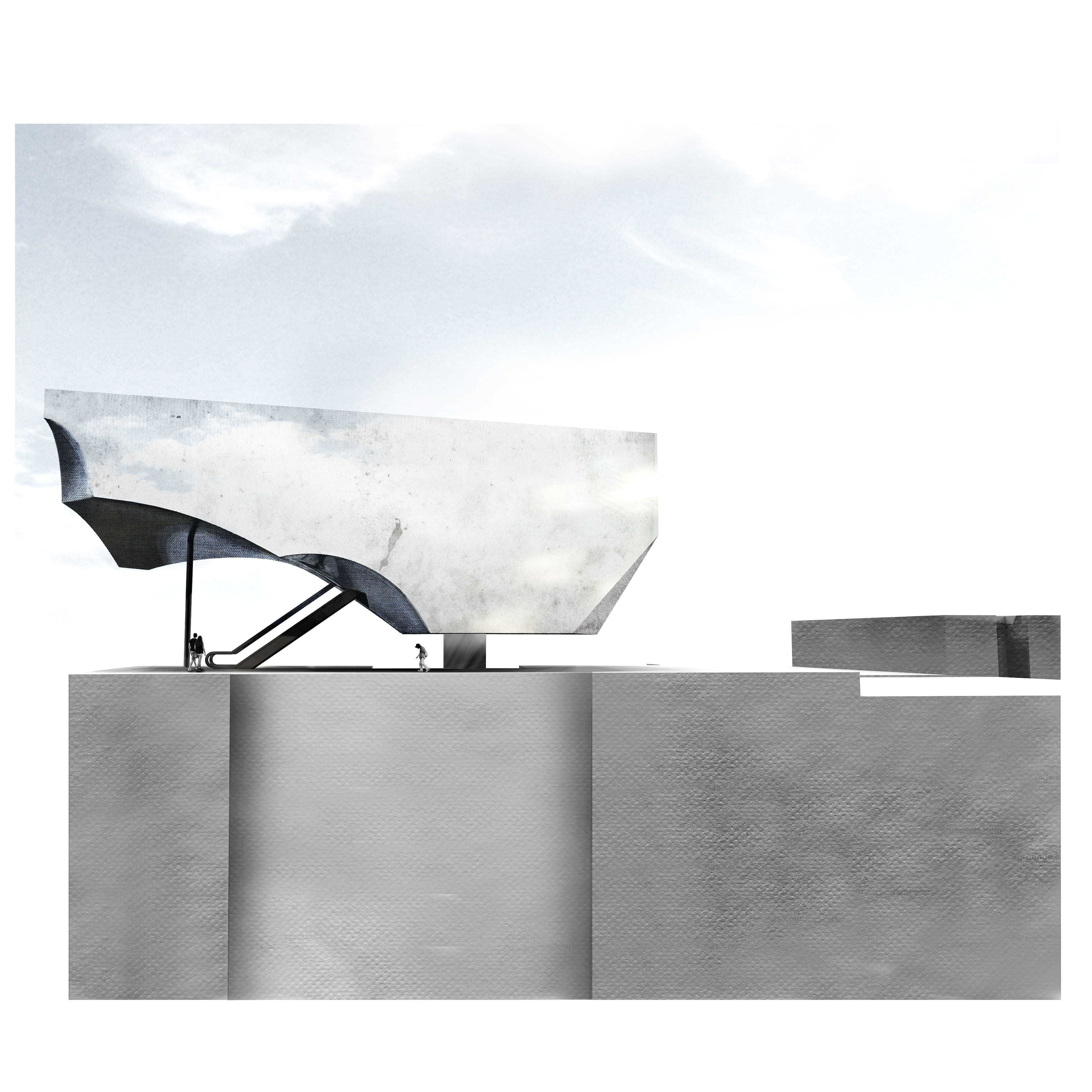The aim of the project it to understand the energy generation/distribution as a process which can be developed as a parasitic apparition of specific prototypes, in this case in the urban context. The idea of the micro-intervention, with small modules which interiorize the climatic factors of the context and act as apparatuses creators of autonomy.
The place where this theory was applied is La Habana, Cuba, more specifically the Old Havana. The water infrastructure in this area –and not just- is in very precarious conditions, this together with the drought that has been affecting the area for a few years now reinforces the urgent need for capital interventions focused on the water generation / distribution / correct use. The second factor to take in account is the energy generation as a key point in the achieving of the autonomy of this place, which correct functioning is affected by the evident economic limitations.
Both of the goals, energy and water generation are achieved by using the immediate resources that the context offers. Energy is collected from the direct solar radiation, very important in the Caribbean context, with more that 300 sunny days each year average, and water is generated by the use of condensation techniques. The humidity in Havana is very high, around 70% average, this with full of moisture will get in contact with surfaces of lower temperature (5-6 Degrees), in order for it to condense, re-directing it to storage point and after to the elevated storage tanks in each block. The project started with the creation of a mega-structure over the city, idea that was developed after, converting this mega-building into many small prototypes, exteriorly absorbing the city spirit, and interiorly creating energy ‘from thin air’. Each prototype is different, depending on its location, its formal composition is given by the subtraction of ‘shapes’ that respond to specific functions.
